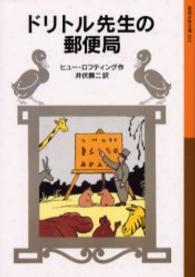- ホーム
- > 洋書
- > 英文書
- > History / World
Full Description
By far the most common coins found by metal detectorists are the Romano-British copies of the third and fourth centuries. They are often described as "barbarous radiates" or even more disparagingly as "Roman grots". These little bronze offerings have a charm of their own and deserve more than to be condemned to a metal detectorist's junk box or ignored by numismatists and archaeologists as being unimportant. The purpose of this book is to highlight some of the more interesting copies from Roman Britain and to show that they too tell a story. They form miniature pieces of art made by local British artisans for use by the Romano-British population.
This book aims to illustrate the range of copies found in a way that will be of interest to numismatists, archaeologists, collectors and metal detectorists. I hope that it will foster in the reader an appreciation of an important aspect of the art of Roman Britain, and consign the description "grots" to never ending banishment.
Contents
Foreward 4
Introduction 8
Chapter One: The First Copying Epidemic 12
Chapter Two: The Inter-Epidemic Years 138-260 21
Chapter Three: The Radiate Epidemic 260-286 27
Chapter Four: The British Empire: Carausius and Allectus 51
Chapter Five: The Early Fourth Century 70
Chapter Six: The Mid-Fourth Century 84
Chapter Seven: The Aftermath 92
Chapter Eight: The Final Decades of Roman Britain 98
Conclusion 103
Bibliography 104







